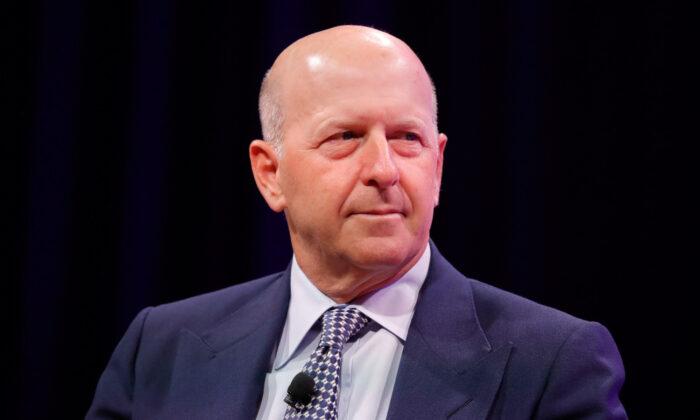Goldman CEO David Solomon admitted that the bank is planning to cut jobs due to economic reasons—a decision that comes as other big banks are also considering similar options and the United States is seeing an increase in unemployment claims.
In his year-end message to staff, Solomon
said that the firm is working on a new round of layoffs which will be announced in upcoming weeks, potentially during the first half of January, according to Bloomberg. “There are a variety of factors impacting the business landscape, including tightening monetary conditions that are slowing down economic activity. For our leadership team, the focus is on preparing the firm to weather these headwinds,” he said.
According to Goldman executives, the workforce at the company has risen by 34 percent since the end of 2018, to more than 49,000, as of third quarter 2022.
Earlier this year, Goldman had terminated hundreds of jobs, resuming its usual annual culling of low performers, which it had paused during the COVID-19 pandemic.
The firm is set to post an annual revenue of roughly $48 billion in 2022, which would be its second-best performance after last year. Overall revenues fell by 20 percent during the January–September period this year compared to 2021.
Revenues of investment banks have generally fallen this year due to uncertainty surrounding the economy, and a market downturn.
Job Cuts
Like Goldman, other major financial institutions have announced job cuts as well. Morgan Stanley plans to cut 2 percent of its workforce, amounting to around 1,600 workers.Citigroup and Barclays have already begun cutting jobs by the hundreds. Bank of America is now looking to hire fewer people. Fees from takeovers and fundraisings have crashed by around 50 percent in 2022 as compared to 2021, according to
The Washington Post.
A Dec. 1st
report by business and executive coaching firm Challenger, Gray & Christmas noted that U.S.-based employers had announced 76,835 job cuts in November, which is 127 percent higher than in October and 417 percent higher when compared to November 2021.
The tech sector cut 25 percent of jobs this year up to November. The auto sector announced the second-most job cuts in 2022, up 198 percent from the same time last year. Real estate industry job cuts rose by 187 percent, the financial sector laid off 105 percent more workers, and the financial tech sector saw layoffs surge by 1,272 percent.
In an
interview with Bloomberg last month, Moody’s Analytics chief economist Mark Zandi predicted that the United States will be going through a tough period next year.
“The Federal Reserve’s going to do everything it can to get inflation, and they’re going to succeed one way or the other. So, I think 2023 is going to be a pretty tough year. Certainly, we’re going to see job growth slow, may see some declines, unemployment’s going to rise,” he said.
Unemployment Claims
While companies announce job cuts, applications for unemployment benefits in the United States rose last week, according to data from the Department of Labor.“In the week ended December 24, the advance figure for seasonally adjusted initial claims was 225,000, an increase of 9,000 from the previous week’s unrevised level of 216,000. The four-week moving average was 221,000, a decrease of 250 from the previous week’s revised average,” according to a
press release on Dec. 29 by the Department of Labor.
Continuing claims, which refers to the number of people who had previously filed for benefits and are still receiving them, rose by 41,000, to 1.71 million for the week ended Dec. 17.
This is the highest since February. The persistent upward trend in continuing claims is seen as an indication that out-of-work individuals are finding it more difficult to find jobs.





